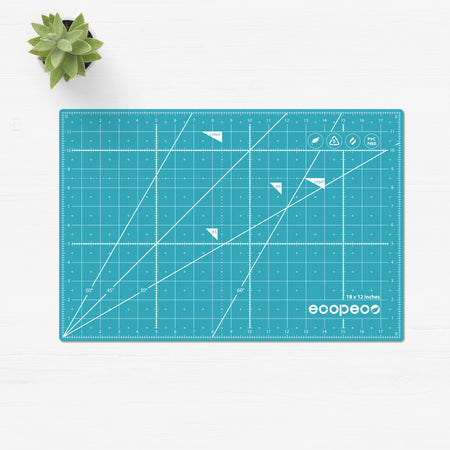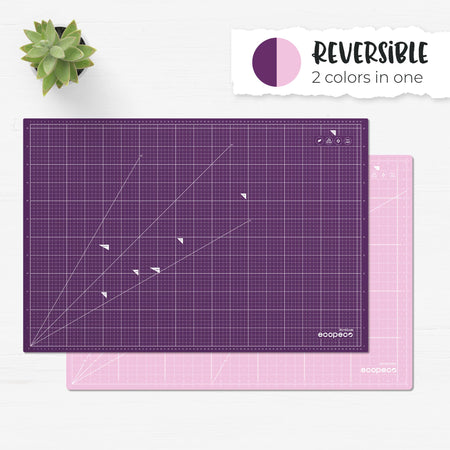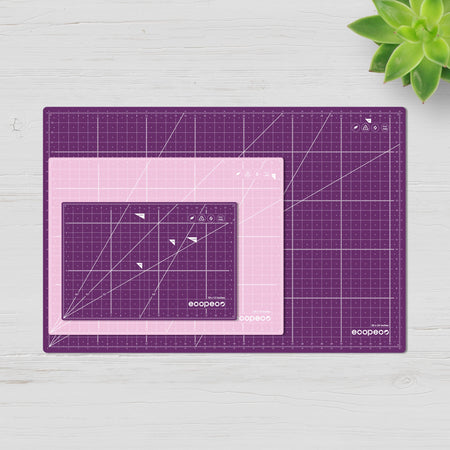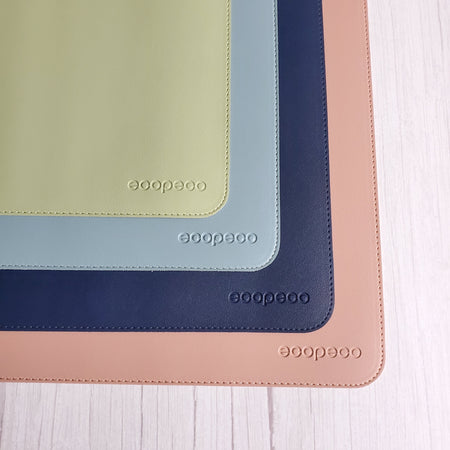Our Commitment to You
July 22, 2019 – Ricki Nethercote

At ecopeco® our priorities are different. In creating tools that ignite your creative spirit, our first commitment is to crafting tools that we too would use and would allow our families to use. Our commitment resonates in every ecopeco® cutting mat that we produce. This is achieved through a number of features that make ecopeco® cutting mats supremely functional but also through our commitment to using the safest possible materials in producing your cutting mat, and our refusal to use PVC.
PVC is a highly versatile yet highly toxic form of plastic. It is known to be one of the most prolific synthetic materials found on the planet today and is used in millions of products across the globe. Also referred to as vinyl, PVC is used in a wide spectrum of industries, including food packaging, toys, building and construction, healthcare, automobile, electronics and more.
The biggest problem with PVC is the fact that harmful chemicals are used to treat this plastic before it can be used to produce the millions of products made with PVC. Phthalates, a family of industrial chemicals, are highly effective at softening PVC but a number of these chemicals are known to be extremely hazardous to our health. Phthalates such as BBP, DBP and DEHP are already banned from use in toys and products meant to help babies eat, sleep, teethe or suck.
In order to make them pliable and flexible, cutting mats made from PVC are treated with phthalates. Given the fact that you’d be handling your cutting mat, the major threat would be exposure to phthalates due to absorption through the skin. Exposure through inhalation is another potential risk. These chemicals are associated with the growth of tumors, are considered carcinogenic, and may affect reproductive health in humans. Some are known to irritate the skin and eyes as well as cause nausea, dizziness and vomiting.
The production of PVC is another major cause for concern. Factories producing PVC emit extremely hazardous dioxins, which the World Health Organization defines as a "group of chemically-related compounds that are persistent environmental pollutants (POPs)." So toxic are these emissions, that they are measured in hundredths of grams.
Even more harrowing is the use of recycled PVC. Emotively renamed to suggest an environmentally friendly option, recycled PVC contains a hazardous concoction of toxic chemicals, heavy metals and other additives that form a part of the recycling process. As far as your cutting mat choice is concerned, it is important to know that the middle layer of some cutting mats are made from this recycled PVC as a means of reducing production costs.
While all products containing PVC display the recycling symbol with the number 3, you will notice that all ecopeco® cutting mats bare the recycling symbol with the number 5 inside the triangle. You can rest assured that ecopeco® cutting mats contain absolutely no PVC.
At ecopeco® we are passionately committed to your creativity and your health. We simply can’t accept a compromise on either of these priorities. You see, we’re creative spirits who want to create tools that inspire the best of your creativity. How could that ever be possible if we were producing cutting mats that emit harsh chemical smells, are made from materials widely known to be harmful to our health and contain materials that cause profound harm to our shared environment?
Whether you’re a quilter, sewer, artist, bullet journal aficionado, model maker or whatever other creative pursuit ignites your soul, we at ecopeco® want to know that our products have played a role in you fulfilling your creative goals and we’re 100% committed to doing it with your best interests at heart.
References:
1. https://www.theworldcounts.com/counters/use_of_chemicals_in_daily_life/is_pvc_toxic
2. https://www.greenlivingtips.com/articles/pvc-and-the-environment.html
3. https://cehn.org/our-work/eco-healthy-child-care/ehcc-faqs/phthalates-polyvinyl-chloride-pvc/
4. https://safebabyhealthychild.com/how-dangerous-is-pvc-in-toys-weve-got-the-answers-from-the-expert/
5. https://www.webmd.com/a-to-z-guides/features/what-are-phthalates#1
6. https://healthybuilding.net/blog/25-epa-reaffirms-pvcs-negative-health-impacts
7. https://www.who.int/news-room/fact-sheets/detail/dioxins-and-their-effects-on-human-health




